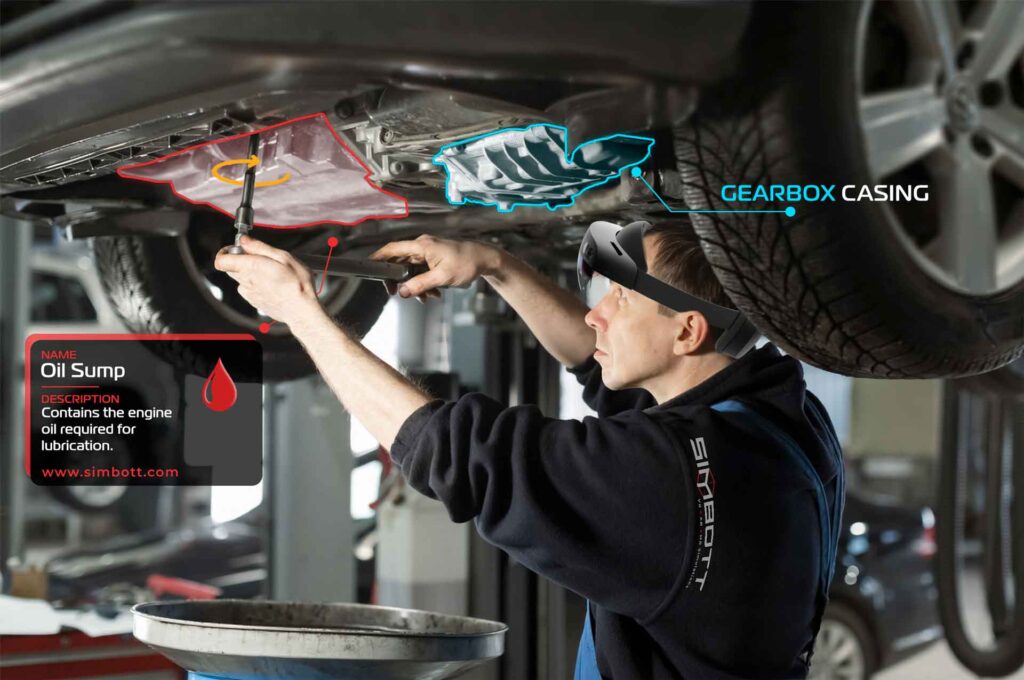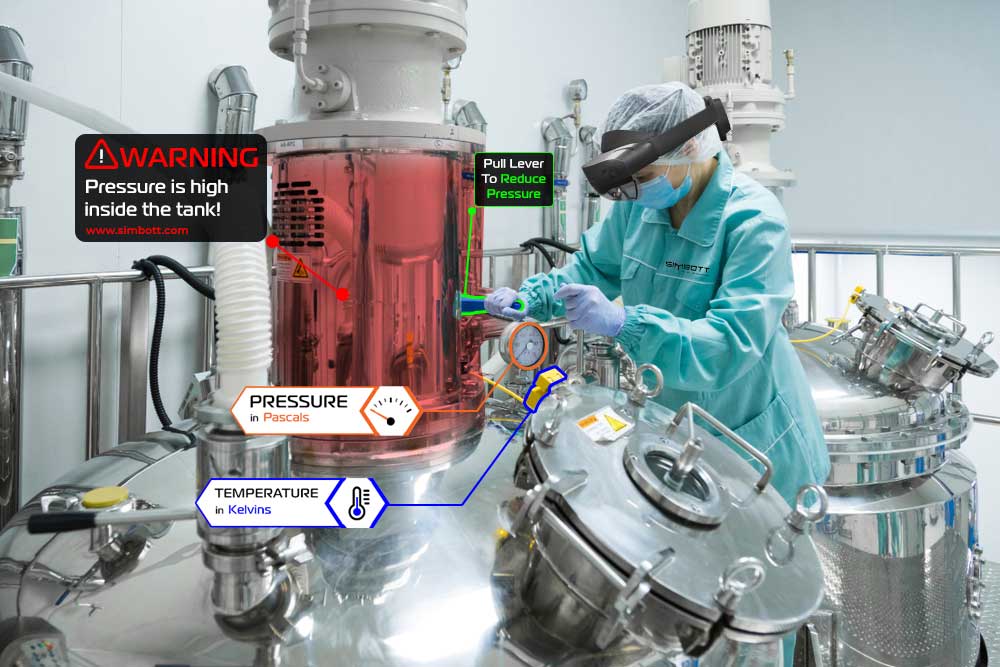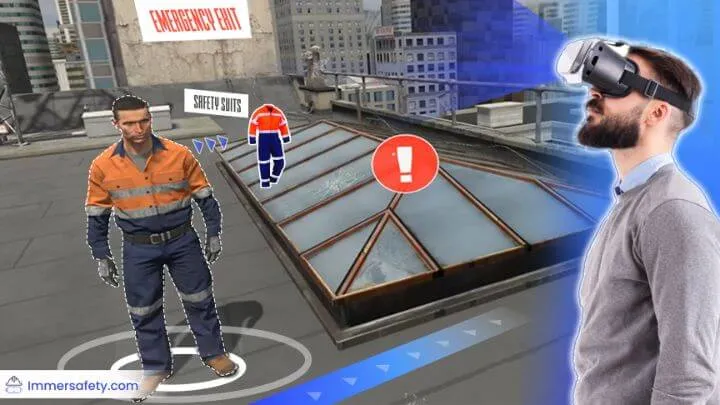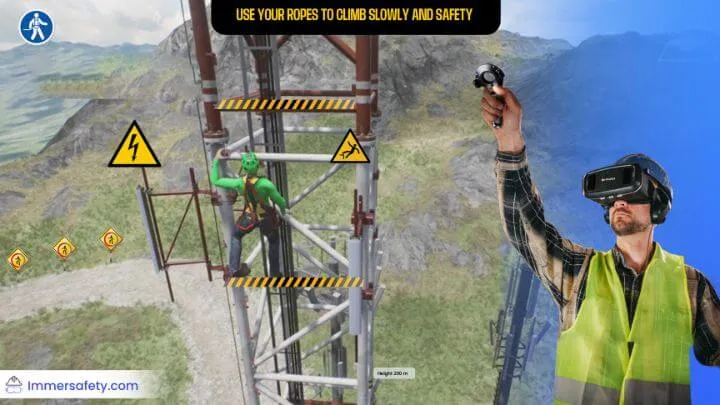Discover the transformative power of VR training for your industry. Uncover the myriad benefits virtual reality offers your workforce, from heightened engagement to cost savings.
Dive into our comprehensive guide to understand how VR training can revolutionize skill development and empower your employees.”
What Is VR Training?

Virtual Reality (VR) training is a cutting-edge method where employees undergo simulated experiences in a virtual environment. It provides hands-on practice in realistic scenarios without real-world risks. Using specialized VR headsets and software, trainees can immerse themselves in lifelike simulations, enhancing learning, skill development, and retention.
10 Benefits of VR Workplace Training You Must Know
1. Enhanced Learning Engagement:
VR training provides an immersive experience that captivates trainees, leading to higher levels of engagement compared to traditional training methods. For example, using a VR training program for emergency response procedures allows trainees to actively participate in simulations, boosting their focus and retention.
See Our All Modules: VR Safety Training Solutions
2. Cost-effectiveness:
Virtual reality training can significantly reduce costs associated with traditional training methods, such as travel expenses, venue rentals, and material production. By utilizing VR training simulators, companies can provide hands-on experiences without the need for physical resources, saving money in the long run.
3. Safety Improvement

VR simulation training enables employees to practice hazardous tasks in a safe virtual environment, reducing the risk of accidents and injuries. For instance, workers in high-risk industries like construction can undergo virtual reality training to learn proper safety protocols without being exposed to real-world dangers.
4. Customized Learning:

VR training programs can be tailored to meet the specific needs and skill levels of individual learners. This customization allows for personalized learning paths and adaptive feedback, ensuring that each trainee receives the necessary support and challenges. An example would be a VR training program for medical professionals, which adapts to the learner’s pace and provides targeted practice based on their performance.
5. Remote Training Opportunities:
Virtual reality training eliminates geographical barriers, enabling employees to undergo training regardless of their location.
With VR for training, organizations can conduct immersive sessions for remote teams, facilitating collaboration and skill development without the need for everyone to be physically present in the same place.
6. Rapid Skill Acquisition:

VR training accelerates the learning process by providing hands-on experience in realistic scenarios. Trainees can practice tasks repeatedly until mastery, leading to faster skill acquisition compared to traditional classroom-based training. For instance, using a VR training simulator for operating heavy machinery allows operators to refine their skills in a controlled environment before operating real equipment.
7. Increased Retention Rates:

Studies have shown that VR training leads to higher retention rates compared to traditional training methods. The immersive nature of virtual reality enhances memory consolidation, leading to better long-term retention of knowledge and skills. For example, employees undergoing VR training for customer service scenarios are more likely to remember and apply effective communication techniques in real-world interactions.
8. Scalability:
Virtual reality training can easily scale to accommodate large numbers of trainees simultaneously. Whether it’s onboarding new employees or upskilling an entire workforce, VR training programs can be deployed across multiple devices and locations, ensuring consistency and efficiency in training delivery.
9. Real-time Feedback:
VR training provides instant feedback to trainees, allowing them to assess their performance and make adjustments in real-time. This immediate feedback loop enhances the learning process by reinforcing correct behaviors and correcting mistakes promptly. For example, in a VR training program for sales representatives, trainees receive feedback on their pitch delivery and interpersonal skills during simulated customer interactions.
10. Accessibility for People with Disabilities:

Virtual reality training offers accessibility features that cater to individuals with disabilities, providing equal opportunities for skill development and career advancement. For instance, VR simulations can accommodate various learning styles and disabilities, such as visual impairments or mobility limitations, by offering alternative input methods and customizable interfaces.
11. Environmental Impact Reduction:
By adopting virtual reality training, organizations can minimize their environmental footprint by reducing the need for paper-based materials, transportation, and energy consumption associated with traditional training methods. VR training contributes to sustainability efforts by promoting eco-friendly practices and reducing carbon emissions related to business operations.
FAQs for Virtual Reality Workplace Training.
What is a VR training simulator?
A VR training simulator replicates real-life scenarios in a virtual environment, allowing trainees to practice skills without real-world risks. For example, in aviation, pilots use VR simulators to practice emergency procedures and flight maneuvers in a controlled setting, enhancing their proficiency and safety.
What are VR training programs?
VR training programs offer immersive learning experiences through virtual reality technology, enhancing employee training effectiveness and engagement. For instance, medical professionals utilize VR programs to simulate surgeries, providing hands-on practice and improving surgical skills with realistic feedback in a risk-free environment.
What is VR simulation training?
VR simulation training provides lifelike scenarios in a virtual setting, enabling hands-on practice for various skills and tasks. For example, firefighters use VR simulations to train for different emergency scenarios, allowing them to practice strategies, communication, and decision-making in realistic fire and rescue situations.
What is virtual reality for training employees?
Virtual reality for training employees involves using VR technology to simulate workplace scenarios, enhancing skill development and knowledge retention. For instance, manufacturing companies utilize VR to train employees on assembly line processes, enabling them to practice tasks and troubleshoot issues in a virtual environment before applying them on the job.
Why use virtual reality for training?
Virtual reality is used for training due to its immersive nature, which improves engagement, offers realistic simulations, and facilitates rapid skill acquisition in a safe environment. For example, military personnel utilize VR training to simulate combat scenarios, allowing them to hone their tactics and decision-making skills without endangering lives or resources.
Final Thoughts About VR Workplace Safety Training
In conclusion, virtual reality training offers an innovative and effective approach to skill development and employee training. By providing immersive, realistic simulations in a safe environment, VR enhances engagement, retention, and proficiency. Embracing VR technology empowers industries to elevate their workforce training, ultimately driving success and growth.


